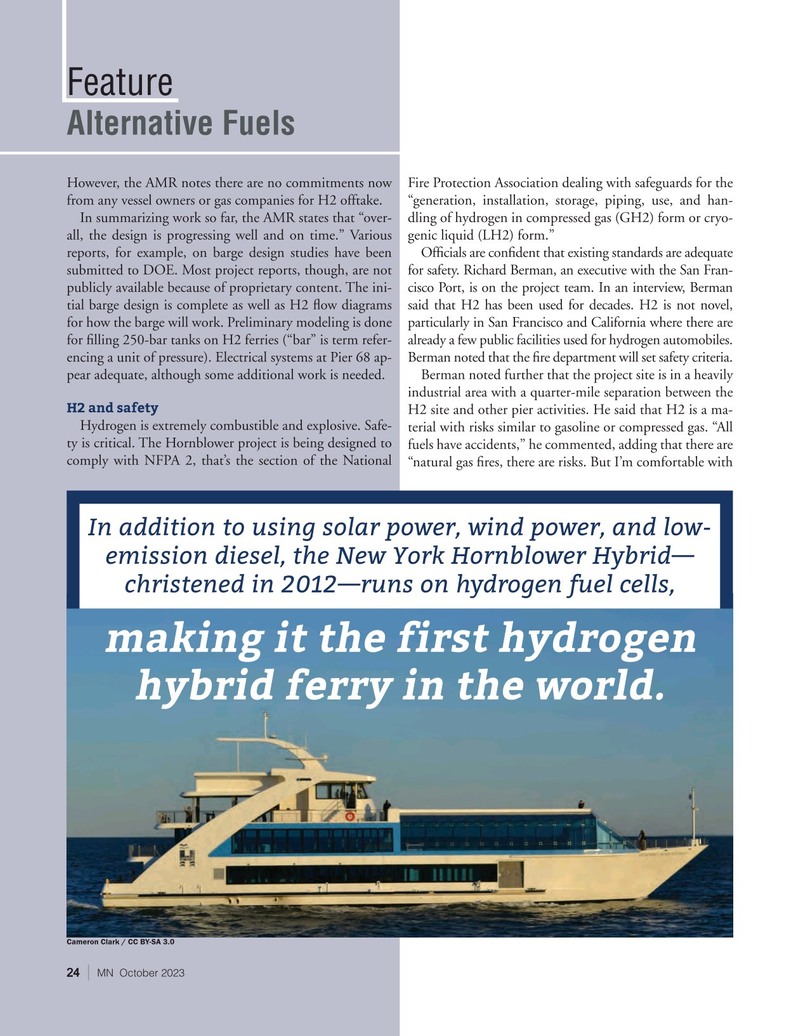
Page 24: of Marine News Magazine (October 2023)
Offshore Energy
Read this page in Pdf, Flash or Html5 edition of October 2023 Marine News Magazine
Feature
Alternative Fuels
However, the AMR notes there are no commitments now Fire Protection Association dealing with safeguards for the from any vessel owners or gas companies for H2 offtake. “generation, installation, storage, piping, use, and han-
In summarizing work so far, the AMR states that “over- dling of hydrogen in compressed gas (GH2) form or cryo- all, the design is progressing well and on time.” Various genic liquid (LH2) form.” reports, for example, on barge design studies have been Of? cials are con? dent that existing standards are adequate submitted to DOE. Most project reports, though, are not for safety. Richard Berman, an executive with the San Fran- publicly available because of proprietary content. The ini- cisco Port, is on the project team. In an interview, Berman tial barge design is complete as well as H2 ? ow diagrams said that H2 has been used for decades. H2 is not novel, for how the barge will work. Preliminary modeling is done particularly in San Francisco and California where there are for ? lling 250-bar tanks on H2 ferries (“bar” is term refer- already a few public facilities used for hydrogen automobiles. encing a unit of pressure). Electrical systems at Pier 68 ap- Berman noted that the ? re department will set safety criteria.
pear adequate, although some additional work is needed. Berman noted further that the project site is in a heavily industrial area with a quarter-mile separation between the
H2 and safety
H2 site and other pier activities. He said that H2 is a ma-
Hydrogen is extremely combustible and explosive. Safe- terial with risks similar to gasoline or compressed gas. “All ty is critical. The Hornblower project is being designed to fuels have accidents,” he commented, adding that there are comply with NFPA 2, that’s the section of the National “natural gas ? res, there are risks. But I’m comfortable with
In addition to using solar power, wind power, and low- emission diesel, the New York Hornblower Hybrid— christened in 2012—runs on hydrogen fuel cells, making it the first hydrogen hybrid ferry in the world.
Cameron Clark / CC BY-SA 3.0 24 | MN October 2023

 23
23

 25
25
